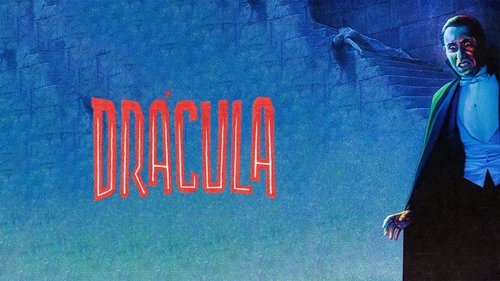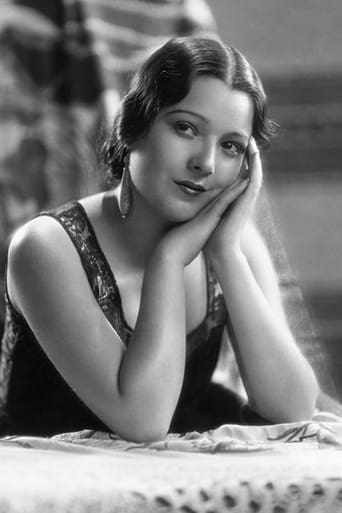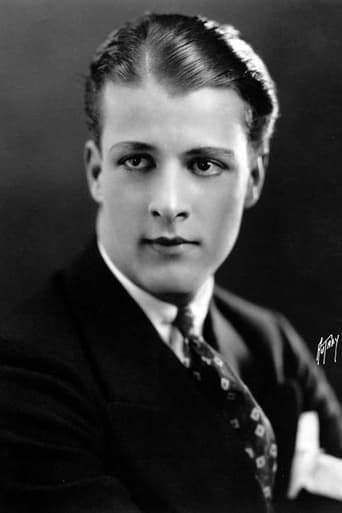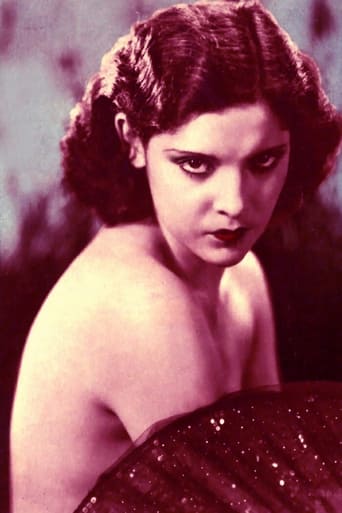Cineanalyst
Made during the nights at Universal while the English-language "Dracula" was filmed during the days, this Spanish-language version offers an interesting comparison of another cast and crew approaching the same script and sets differently. While some, like David J. Skal (author of "Hollywood Gothic"), have praised the Spanish "Dracula" for its supposedly superior cinematography and, consequently, better pacing, I partially disagree. Some of the setups and camera-work, indeed, are better and much of it's different, but some of it's worse. And, if anything, the 30-some- minutes of padding to the runtime doesn't help (originally, it may've been closer to 20 minutes, as the English version has lost footage). Moreover, while there are some other interesting differences between the two, including the acting, I think the most overlooked and, perhaps, important differences are related to the languages and the intended audiences. One consequence of this is that the Spanish "Dracula" emphasizes Catholicism more, which, in this respect, makes it more faithful to one of the main conceits of Bram Stoker's novel.Although Stoker was, reportedly, an Anglican, "Dracula," as has been noted by D. Bruno Starrs, reads as Catholic proselytizing; indeed, the Anglican characters in the novel, by the end, practically adopt the Catholic faith. And, of course, the story is full of Catholic iconography, which is used to combat the soulless vampire. Whereas other adaptations, including the 1931 English version, include the use of crucifixes and rosaries to ward off vampires and a bit of kneeling prayer and signs of the cross, they seem to be included as part of the occult intrigue—and about as effective as wolf's bane. That makes sense for the English "Dracula," because it was primarily meant for a majority-Protestant domestic audience. The Spanish "Dracula," on the other hand, meant for mostly-Catholic viewers, such as in Latin America, is far more expressive of its characters' Catholic faiths. So, Van Helsing and others more frequently make the sign of the cross, including the kiss of the thumb, which would also presumably be the general practice of said audience.While this film might be the best adaptation of the Catholicism in Stoker's novel because of its language orientation, it also suffers from an absence of accents from non-Spanish-speaking counties. Bela Lugosi's genuine, thick Hungarian accent is an important reason that his Dracula is better than the toothy, bug-eyed impersonation by Carlos Villarias. The English film also featured Hungarian-speaking extras in an early village scene, which seems a bit like an Easter egg regarding its star's heritage. That's gone here. Also gone is Van Helsing's faux Dutch accent. Consequently, an adaptation that was already more regionally restricted than the book becomes even more restricted, as well as more confused due to the settings remaining in England (although the geography of England is a source of confusion in both films).Mostly, this "Dracula" suffers without Lugosi. Some of the acting is better, though. The scenes between Mina and Harker in English, for instance, were placid and sometimes vomit inducing, but there's more emotion and sex appeal in Spanish—in no small part thanks to Lupita Tovar, who nearly falls out of her gown. And Pablo Àlvarez Rubio gives Dwight Frye a run for his money as Renfield. Some loose ends left in the English film are sewn up here, too, including the fate of Lucy and the scene of Renfield crawling towards the fainted nurse. The scene of the sanitarium guard and the maid's talk on the lawn works better here because there's some flirtation between the two. Even better, the scene where Renfield accidentally cuts himself at the Count's castle is enhanced because Renfield does it while eating—which contrasts nicely with the feast that his crucifix denies to Dracula. In the English version, he just cuts himself on a paper clip.Some scenes in both films are photographed and staged better than the other and still others are just different. The early scene inside a stagecoach, for instance, isn't necessarily better in either film. The Spanish one is a single shot and probably has better blocking, whereas the English one is composed of several shots. (The English film, overall, has a quicker average shot length (ASL), which in that respect gives it a better pacing. I counted a 9.6 seconds ASL for English vs. 10.8 seconds for Spanish. My counts trend north of those at the cinemetrics website, but the gaps between the films are similar. Gary D. Rhodes, author of "Tod Browning's Dracula" and who probably swings too far the opposite of Skal in arguing in favor of the English version, has an outlier Spanish count of a 12+ seconds.)The first appearance of Dracula is more stunning for Lugosi, with the dolly movement and the highlighting of his eyes—a technique largely absent for Villarias. But, the second appearance, when Dracula greets Renfield, is better handled in Spanish, with a crane shot and a swooping bat instead of pointless insert shots of armadillos. The Spanish film suffers sometimes from its use of outtakes from the English film, including having two sets of female vampires; its missing scenes of Dracula prowling the streets of London, including the killing of the flower girl; and Van Helsing and Dracula's contest-of-wills scene is, unfortunately, turned into a game of peekaboo. I prefer Renfield's death scene in the Spanish version, though. In the end, the best "Dracula" would've been some alternation between the two films, but, of course, with Lugosi in the titular role.(Mirror Note: There's a virtuoso through-the-mirror shot that dollies out in a scene with Eva and Lucia; in the English version, editing is used more instead of camera-work for this scene, as the mirror shot serves as a reverse angle within a series of shots. It also almost has a good sound-bridge transition from the theatre scene and includes Lucy mocking Dracula's accent. The cigarette-box mirror scenes are more similar.)
Dan Franzen (dfranzen70)
A lot of people probably don't realize this, but while Tod Browning's classic Dracula, starring the inimitable Bela Lugosi in his breakout role, was being filmed, a Spanish-language version was being filmed using the same sets - at night. The result is a movie that's about 30 minutes longer than its English-language counterpart, with more-nuanced characterizations and some additional plot threads from the story.Count Dracula (Carlos Villarias) receives his solicitor Renfield (Pablo Alvarez Rubio) in his dark, crumbling, in-need-of-a-maid castle. Renfield carries with him papers that grant Dracula possession of Carfax Abbey in London. After signing the papers, the Count bids his guest good night. Next thing Renfield knows, he's in the hold of a ship foundering in a storm on the high seas. Dracula has risen from his coffin and helped himself. In London, Renfield is taken to a sanatorium and placed under the care of a Dr. Seward (Jose Soriano Viosca), who happens to have a lovely daughter named Eva (Lupita Tovar) - known as Mina in Stoker's story. Also on the scene are Eva's boyfriend Juan (Barry Norton) and a visiting scientist named Dr. Van Helsing (Eduardo Arozamena), and the fight is on for Eva's soul and blood.The film was directed by George Melford, who didn't speak a word of Spanish. Even so, he elicited fantastic performances from his cast, notably Rubio, Tovar, and Arozamena. There's more melodrama (pregnant pauses, etc.) than occur in most English-language movies, but the women dress a tiny bit more provocatively, particularly for 1931, so it sort of evens out.I had the opportunity to watch this with live musical accompaniment from Gary Lucas, who played with (among others) Captain Beefheart. Lucas came up with his own compositions that properly fit the mood and setting of each scene; the original had nothing in the way of music save for a song played over the opening credits. And there Gary was, right on stage with his bottleneck guitar and other instruments. He's accompanied horror films before - earlier that afternoon he did Carl Theodor Dreyer's Vampyr, to similar great acclaim. It's true that nowadays a movie has far too much music, enough to drown out such quaint subtleties as plot, but the older ones simply couldn't afford to record music, not during the Great Depression. Lucas' work here is admirable and supportive of a classic film.
AaronCapenBanner
Unusual film in that it is a Spanish language version of the Bela Lugosi film, made at the same time and on the same sets as the 1931 film, only with an entirely different cast and crew. Actually, it was directed at night, while Tod Browning made his during the day. Plot is exactly the same, though differently staged, and in some ways is an improvement, being more atmospheric and effective, even though it is nearly 30 minutes longer! What's missing is a lead actor with the talent of Bela Lugosi, and that's a big deal. Universal Studios apparently did it this way once, and resorted to dubbing in the future, which would certainly be simpler...






